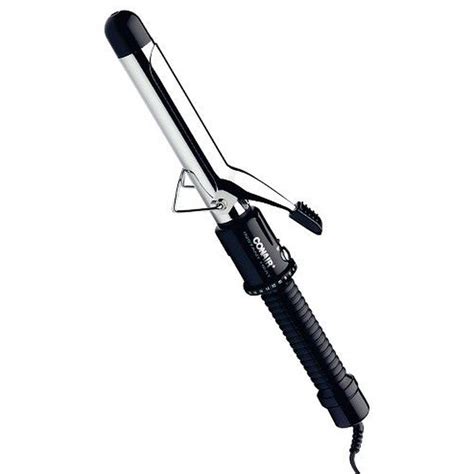Introduction
A curling iron is an essential tool for achieving beautiful, bouncy curls. But with so many different materials available, choosing the best one can be overwhelming. To help you make the right decision, this article will explore the pros and cons of the most popular curling iron materials.

5 Key Factors to Consider
When selecting a curling iron material, consider these five factors:
- Heat distribution: The material should distribute heat evenly to prevent hot spots that can damage hair.
- Barrel surface: The barrel surface should be smooth and free of imperfections to create smooth, frizz-free curls.
- Heat retention: The material should retain heat well to maintain consistent temperature throughout styling.
- Durability: The material should be strong and durable to withstand repeated use and prevent breakage.
- Hair compatibility: Some materials are more suitable for certain hair types or textures.
4 Popular Curling Iron Materials
1. Titanium (Ti)
Pros:
– Exceptionally high heat conductivity, providing even heat distribution
– Lightweight and durable
– Smooth barrel surface for frizz-free curls
Cons:
– Can be expensive
– Can dry out hair if overused
2. Ceramic
Pros:
– Provides gentle, even heat that protects hair
– Emits negative ions to reduce frizz and enhance shine
– Affordable and widely available
Cons:
– May not curl as well on thick or coarse hair
– Can be fragile and susceptible to breakage
3. Tourmaline
Pros:
– Similar benefits to ceramic, with added natural ions
– Helps seal in hair cuticles for extra protection
– Leaves hair feeling soft and smooth
Cons:
– Slightly more expensive than ceramic
– May not be as durable as other materials
4. Ionic
Pros:
– Emits negative ions that remove static and enhance smoothness
– Helps reduce frizz and promote healthy hair
– Suitable for all hair types
Cons:
– Ionic coatings can wear off over time
– May require a higher temperature setting to achieve desired curls
Choosing the Right Material for Your Hair
- Fine and thin hair: Ceramic or tourmaline curling irons with smaller barrels (1/2 inch or less) are ideal for creating delicate curls.
- Thick and coarse hair: Titanium or Ionic curling irons with larger barrels (1 inch or more) provide the power and heat retention needed to tame stubborn strands.
- Damaged or chemically treated hair: Ceramic or tourmaline curling irons are recommended due to their gentle heat and protective properties.
Effective Strategies for Success
- Use a heat protectant spray to shield hair from damage.
- Section hair into smaller pieces before curling to ensure even heat distribution.
- Start curling your hair from the ends and work your way up towards the roots.
- Hold the barrel vertically to create tighter curls, and horizontally for looser, beachy waves.
- Avoid overusing your curling iron to prevent hair damage.
Tips and Tricks for Healthy Styling
- Clean your curling iron regularly with a damp cloth to remove hairspray or product buildup.
- Store your curling iron in a cool, dry place to prevent damage.
- Avoid curling your hair when it’s wet to prevent steaming and frizz.
- Use a leave-in conditioner after styling to moisturize and protect your curls.
Comparative Analysis
| Material | Heat Conductivity | Barrel Surface | Heat Retention | Durability | Hair Compatibility |
|---|---|---|---|---|---|
| Titanium | Very high | Smooth | Very good | Excellent | All types |
| Ceramic | Moderate | Smooth | Good | Fair | Fine and thin hair |
| Tourmaline | Good | Smooth | Good | Fair | All types |
| Ionic | Varies | Smooth | Varies | Varies | All types |
Conclusion
Choosing the best material for a curling iron depends on individual hair type and styling preferences. By considering the key factors outlined in this article, you can find the right material to achieve beautiful, healthy curls that enhance your personal style.
